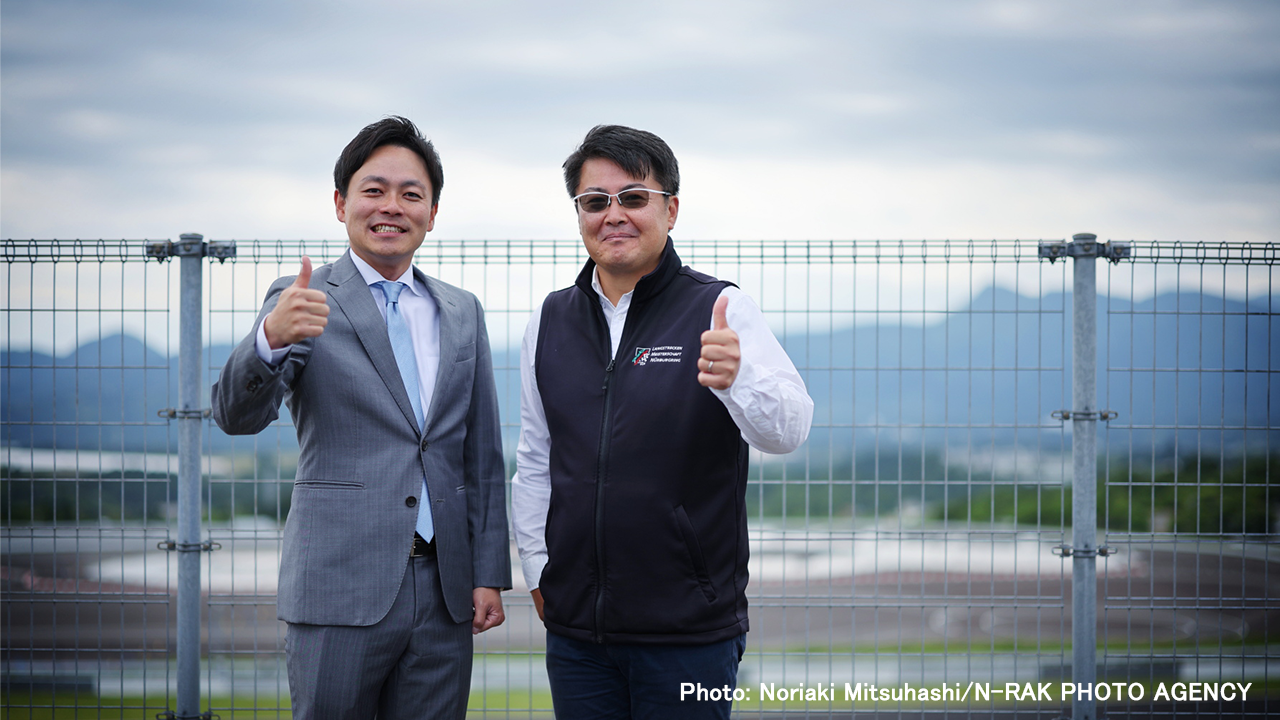
The hydrogen engine Corolla entered the 24 Hours Race for the fourth year. So, of course, we will once again interview Shinya Yamamoto. How does this year's race look to this automotive analyst?

2024 marks the fourth year since the hydrogen engine Corolla began competing in the 24 Hours Race. This truly makes it part of the history of developing hydrogen engines.
There is one man who has kept a keen eye on these attempts every year: none other than automotive analyst Shinya Yamamoto.
Every year, Toyota Times interviews Yamamoto, and every year, he offers a phrase that makes an impression.
The great impact of that first year was reflected in “a catalyst that unleashed our dreams.”
In the second year, he perceived the change in public opinion in favor of BEVs (battery electric vehicles), which he expressed with “our allies in achieving carbon neutrality.”
In the third year, when the fuel changed from gaseous hydrogen to liquid hydrogen, he said, “Everyone can speak openly.” The 24 Hours Race that year was observed by Pierre Fillon, president of the Automobile Club de l'Ouest (ACO), host of the 24 Hours of Le Mans. He announced that starting in 2026, Le Mans would officially approve hydrogen-powered cars.
Now this year, just like always, Toyota Times reporter Kyonosuke Morita wore the same suit to go see Yamamoto at his usual place with a view of the circuit before the 24 Hours Race.
Now what words of wisdom did Shinya Yamamoto bless us with this time?
A Competitive Hydrogen Engine
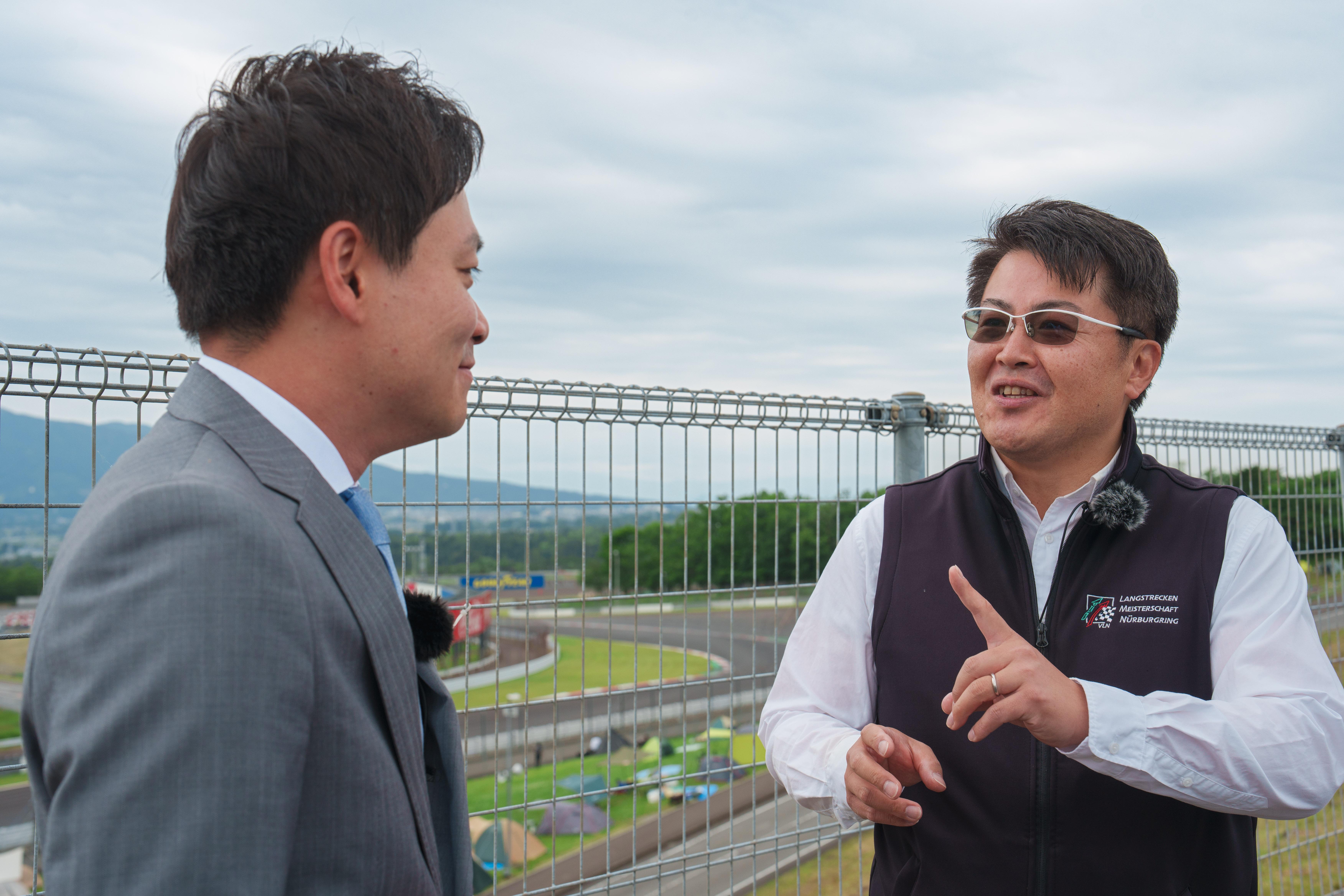
Morita
This is our fourth year. We’re wearing the same clothes, and we’re in the same spot. Huh? Shinya, your glasses...
Yamamoto
These are the 2024 version.
Morita
That’s the only thing that changes.
Yamamoto
I changed them once, so now I started to think I have to change them every year.
Morita
Could you tell me what exactly is different?
Yamamoto
The shape is different. Last year, they were round, but they’ve evolved along with the car.
This back-and-forth is already a tradition.
But this is where they get into the real topic of discussion. Yamamoto says they evolved two full model changes' worth in one year.
Morita
What change are you focusing on most?
Yamamoto
That’s got to be the extended cruising distance. Until now, people have been saying, “Will the cruising distance be enough?” But this time, the team had confidence.
Last year, it went 20 laps on one tank of hydrogen, but the team’s goal for this year is 30 laps.
Yamamoto
That isn’t much different from other cars. In other words, they can do battle.
First, the cruising distance has increased. They also focused on the hydrogen filling speed, and they can do a quick fill just as fast as a gasoline car.
Improvements with the pump and tank have increased the cruising distance by 150%
One background to the extended cruising distance is the issue of changing the hydrogen pump. Last year, there were two pit stops to change the pump, but this time, the development team has increased the pump's durability and will try to complete the race without changing it.
Additionally, the liquid hydrogen tank, which used to be a cylinder, is now an elliptical shape and the capacity for hydrogen has increased from 10 kg to 15 kg.
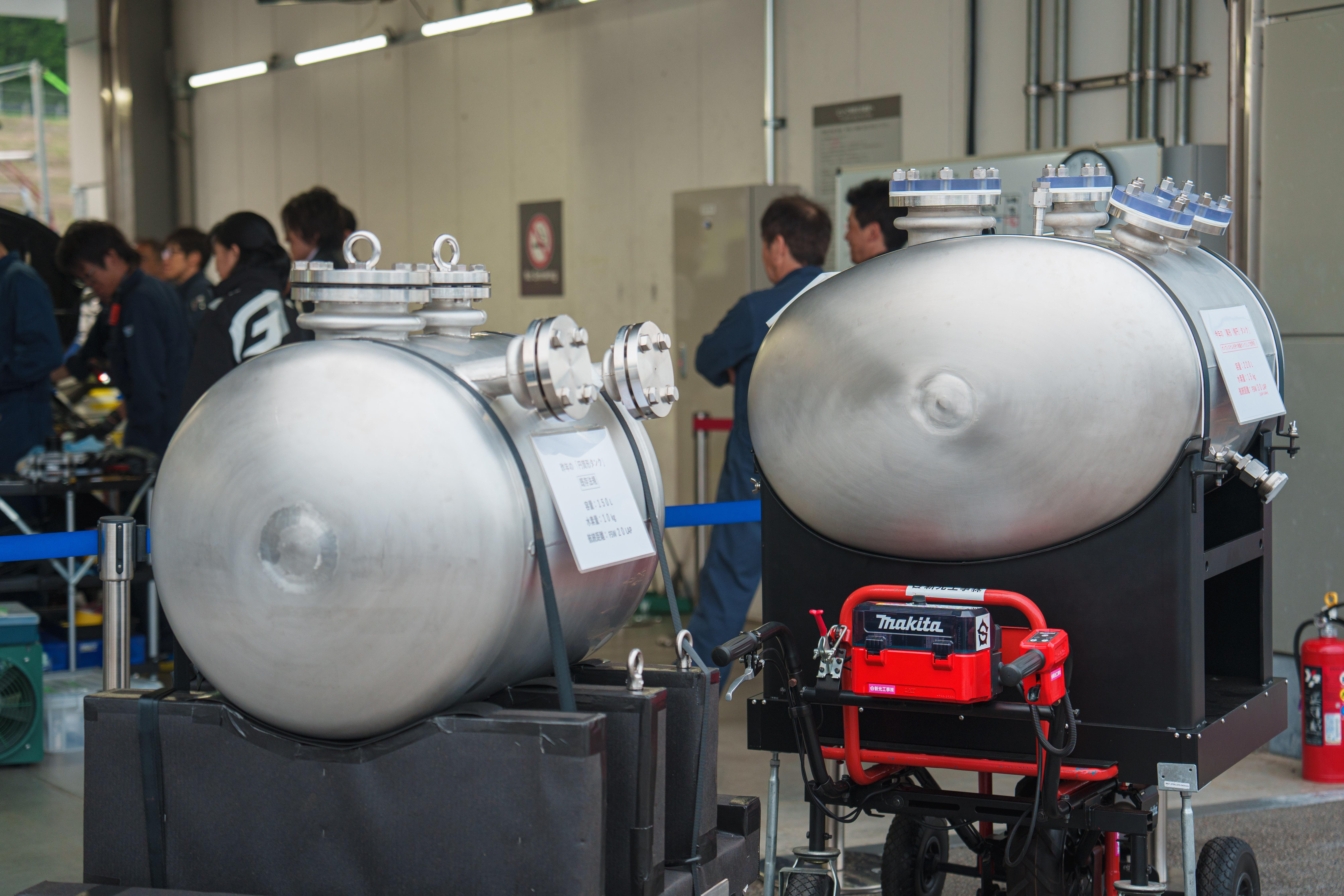
The tank and pump were both improved, allowing it to run 150% further than last year.
Morita
Will it last 24 hours?
Yamamoto
It's just my gut feeling, but I think they can make it.
Morita
With a bit of hope?
Yamamoto
I’ve been watching the team this whole week, and the feeling, the times, and the driver’s comments are all good. It feels like they're running high.
A Philosophy Passed Down
Compared to the first attempt four years ago, would you say there was a change in the level of public acceptance? Yamamoto says, “It’s totally different.”
Yamamoto
It was a solitary struggle four years ago. Since then, we’ve had more and more partners, and we could speak openly. Then, other manufacturers also began opening the door to the future. That's the be-all and end-all.
Up to now, everyone else said BEVs were the only correct answer.
But now we can stand tall and say, “There are other options,” “We must try lots of different things,” and “So let’s go to the track.” There are five companies here today.
Morita
Subaru, Mazda, Nissan, Honda, and Toyota are all in the ST-Q class * .
*A class for cars under development to test new technology.
Yamamoto
This race is the only way to experiment quickly.
Morita
I feel like the Super Taikyu is evolving faster than ever.
Yamamoto
Now it changed to the Super Taikyu Mirai Organization (STMO) ** , but the original Super Taikyu Organization (STO) has had the philosophy of wanting people to use it to build the future for over 20 years.
For example, the Skyline GT-R (Nissan), Mitsubishi Lancer Evolution, and Subaru WRX were all honed here.
The form is different, but the idea that “the Super Taikyu is for new experiments” has been passed down from generation to generation, and it has become more powerful.
**The Super Taikyu was managed by the Super Taikyu Organization (STO) until April 2024, when it announced it would be passed on to the Super Taikyu Mirai Organization (STMO). Led by Akio Toyoda as chairperson and former STO CEO Harumi Kuwayama as vice chairperson, the new system will take hold from June of 2024.
Morita
It has that history behind it.
Yamamoto
Perhaps manufacturers from other countries will start coming now.
Morita
That would be the next step.
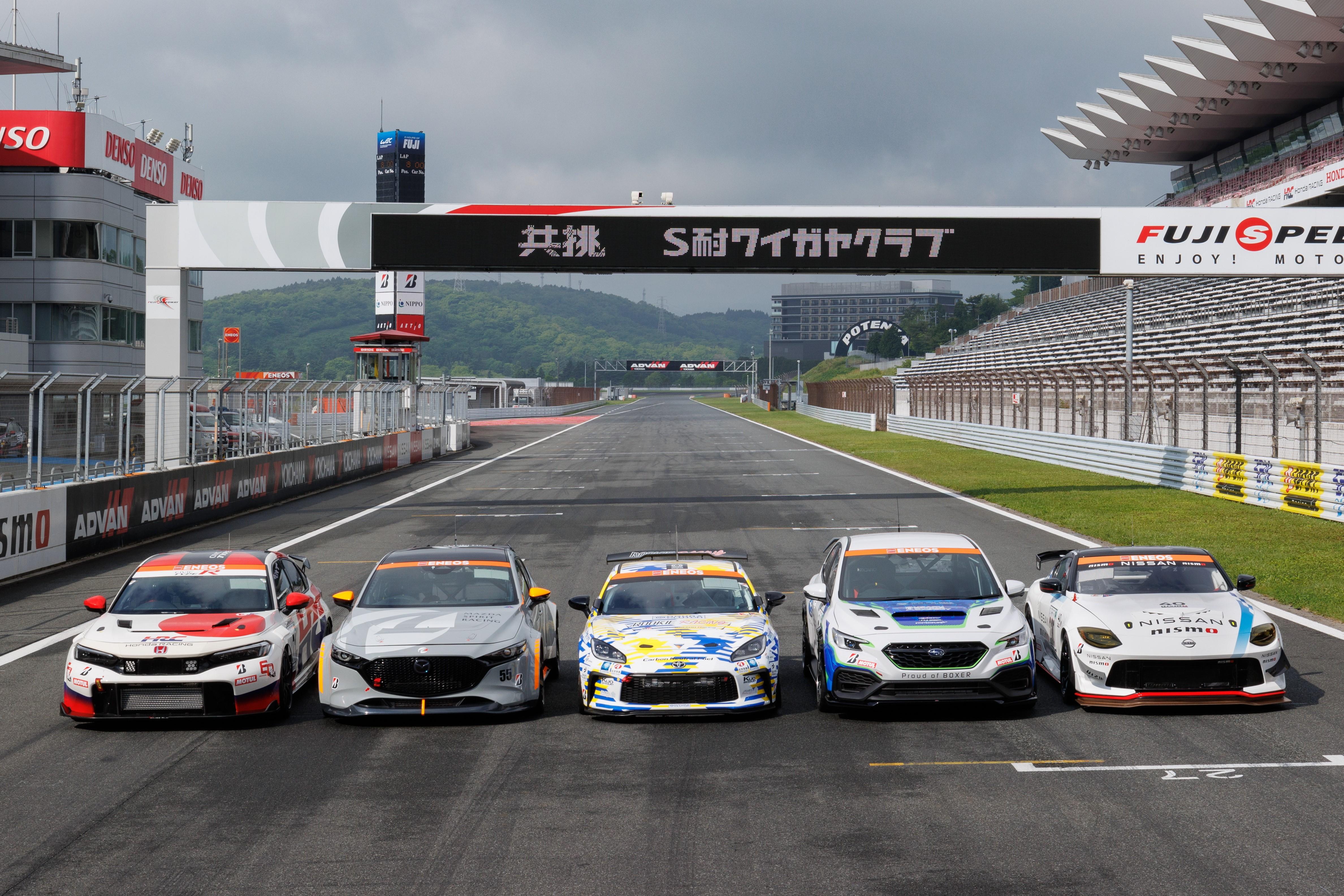
At last year’s 24 Hours Race, the five manufacturers participating in this year’s ST-Q class began the Super Taikyu Waigaya Club, to come together and discuss ways to popularize motorsports and achieve carbon neutrality. The number of partners who can speak openly is increasing.
What Summit Is in View?
Developing hydrogen engines has been compared to climbing a mountain, and the question, “What (mountain) station has been reached?” has drawn attention. The day before the interview, GR Vehicle Development Division Project General Manager Naoaki Ito said, “The hydrogen engine’s base has been made, so the next mountain we have to climb has come into view.”
Yamamoto seems to feel that the summit is getting closer and closer.
Morita
How do you feel about the hydrogen engine’s chances this year?
Yamamoto
I think they can do it this year. It will likely be a battle.
Up to now, it has been a “battle with itself” - how many laps it can do or whether it will break. This time, it will compete with the other cars.
Morita
It is truly getting closer to the phase where it can be sent out into the world.
Yamamoto
I think so. Until now, we have kept asking, “What station on Mt. Fuji are you at now?” but I think we can almost see the summit. We didn’t quite know where the summit was.
I think we can now glimpse the summit as it has evolved so much.
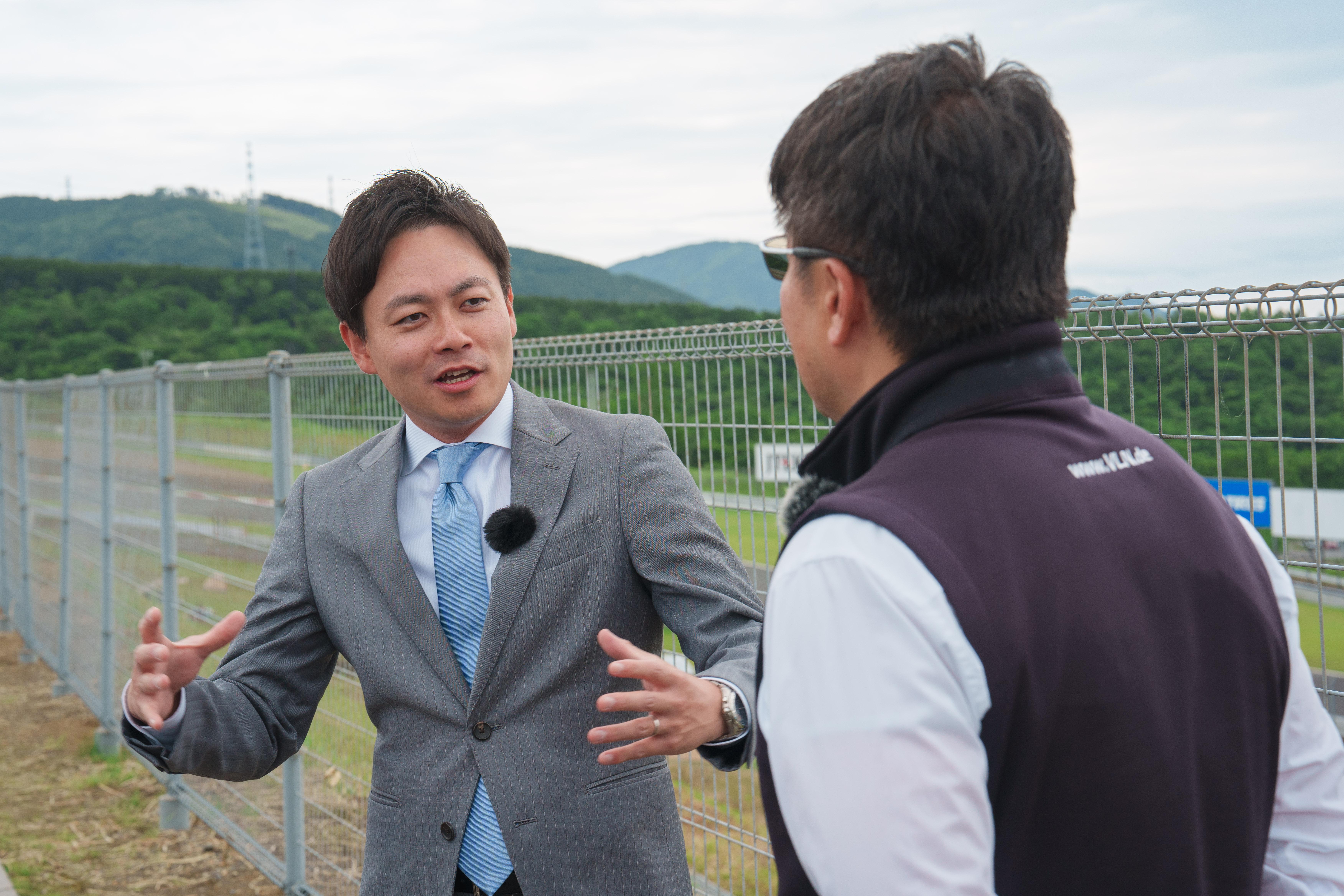
During the interview, the weather was overcast, and it wasn’t possible to see Mt. Fuji. However, it might be visible 24 hours later.
Morita
Are you staying up again?
Yamamoto
Of course, I’ll cover it all without sleeping.
The hydrogen engine has steadily evolved. Even so, in a 24-hour race, you never know what could happen. The Toyota Times Team will continue covering the race until the goal is reached.
In the final race, the liquid hydrogen Corolla had brake trouble and ended with 332 laps and a distance of approximately 1,515 kilometers. It did achieve its goal of going 30 laps on one tank (its max was 31 laps), but it didn’t manage to exceed last year’s record of 358 laps and approximately 1,634 kilometers.
The Taikyu Race truly isn’t easy. The challenge of the hydrogen engine will continue.

